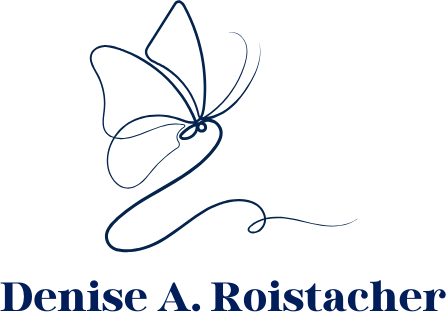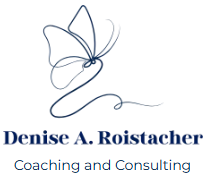The Invisible Architecture of Leadership Behavior
Beneath every leadership action lies an emotional blueprint.
Leadership is often defined by visible actions like charting strategy, aligning stakeholders, and guiding teams through change. Yet if you’ve ever left a high-level meeting feeling rejected, overly responsible, diminished, or even quietly triumphant, you’ve brushed up against something deeper:: the emotional reality of leadership.
These aren’t just momentary reactions. They’re silent influencers—unconscious emotional dynamics that live just beneath the surface of our roles. Left unexamined, they quietly shape how we relate, how we lead, and how we’re experienced by others.
This is the invisible architecture of leadership behavior—the unseen patterns, projections, internalized roles, and historical echoes that shape how we lead, far beyond our intentions
Beyond the Role: What We Feel, Carry, and React To.
We often assume that if someone is in a leadership position, they’re operating from clarity and control. But that’s not always true.
Leadership often evokes strong emotional reactions—and we may not always know why.
- You’re in a routine feedback conversation, but suddenly feel cornered or defensive.
- You’re asked to present in front of senior executives, and an old fear of being wrong or unseen flares up.
- You hesitate to challenge a peer who reminds you of your older sibling—or your critical parent.
- You take on more than your fair share of work, driven by an old impulse to be the “good one” or to keep others calm.
These experiences are not always logical. That’s because they don’t just come from the current moment. They’re often shaped by emotional memory—by what the situation unconsciously reminds us of.
The Role Is Real. The Emotional Layer Is Personal.
In systems psychodynamics, we recognize that leaders operate within three interconnected roles:
FORMAL ROLE: The job description, responsibilities, title, and authority assigned to you.
ENACTED ROLE: How you personally carry and interpret the role, based on your personality, habits, and identity.
EMOTIONAL ROLE: The unconscious stories you bring to the table, and the unconscious expectations others place on you.
The emotional layer often goes unspoken, but it’s powerful. It shapes how you’re perceived and how you perceive others.
For example:
- A team may unconsciously cast you as the savior, the parent, the judge, or the threat—regardless of your behavior.
- You may interpret your role through an old lens, such as, feeling overly responsible, afraid to assert yourself, or expecting rejection.
These dynamics aren’t failures of leadership—they’re a natural part of being human in complex systems. But when they remain unconscious, they can derail effectiveness and lead to frustration, fatigue, or confusion
What Shapes the Invisible Architecture?
A few key forces contribute to this emotional infrastructure:
1. Family of Origin Roles
Our earliest roles—achiever, caretaker, rebel, peacekeeper—don’t vanish. We often carry them into leadership. The over-functioning manager, the invisible senior leader, the reactive peer—all may be reenacting old emotional strategies from childhood.
2. Team Projections
Teams under stress project their anxieties onto leaders. You may be idealized, feared, resented, or leaned on emotionally—not because of what you’ve done, but because of what the system needs to manage uncertainty.
3. Personal History with Authority
How we respond to power is deeply personal. If authority figures in your past were unpredictable, critical, or absent, you may react to your current boss—or team members—with heightened emotion, even when it's unwarranted.
4. Internalized Beliefs
We all carry unconscious beliefs: “I must be perfect to be safe,” “I don’t belong here,” “I’m only valued if I’m useful.” These show up in our leadership posture—in how we speak, silence ourselves, hold power, or give it away.
Leading with Awareness, Not Reaction
The invitation is not to eliminate emotion—but to bring consciousness to what’s driving it.
Here are a few practices to begin working with your invisible architecture:
- Notice your emotional reactions. When do you feel overly responsible, defensive, diminished, or afraid to speak up? Ask, what does this remind me of?
- Reflect on your family role. Were you the achiever, protector, rebel, or caretaker? How does that show up in how you lead today?
- Pay attention to relational patterns. Who on your team evokes strong feelings? Do those feelings align with the reality of the situation—or with something older?
- Distinguish the task from the emotional story. What’s really needed in this moment—and what emotional baggage may be getting layered on top of it?
Why This Matters
When leaders don’t reflect on the unconscious dynamics at play, they often lead from habit, reaction, or emotional reenactment. That can look like:
- Avoiding conflict to stay “liked”
- Over-delivering to prove worth
- Withdrawing when feeling exposed
- Reacting to authority as if it were punitive or untrustworthy
When we bring these patterns into awareness, we can choose differently. We can lead from our current reality—not from inherited roles or old scripts.
.
It’s a reminder that our early stories don’t disappear—they just show up in more grown-up clothes.
Final Thought
“Organizations don’t just shape leaders—they awaken them.”
When we understand the invisible forces behind our leadership behavior, we stop leading from habit—and start leading from choice. The work becomes not just to do the job, but to take up role with wisdom, containment, and self-awareness.
How an Executive/Leadership Coach can Help
An executive coach with specialized training in systems thinking, and organizational and team dynamics, can help you move beyond the job description to uncover the emotional patterns and relational behaviors that shape how you lead—particularly when you find yourself stuck in a familiar pattern.
Through coaching, you can:
- Uncover unconscious roles from your past that influence your behavior in teams
- Distinguish between your formal role and the emotional expectations placed on you
- Build awareness of triggers, projections, and old scripts that no longer serve you
- Strengthen your ability to stay grounded, reflective, and responsive under pressure
Coaching gives you the space to pause, reflect, and lead with greater purpose, presence, and intention.







